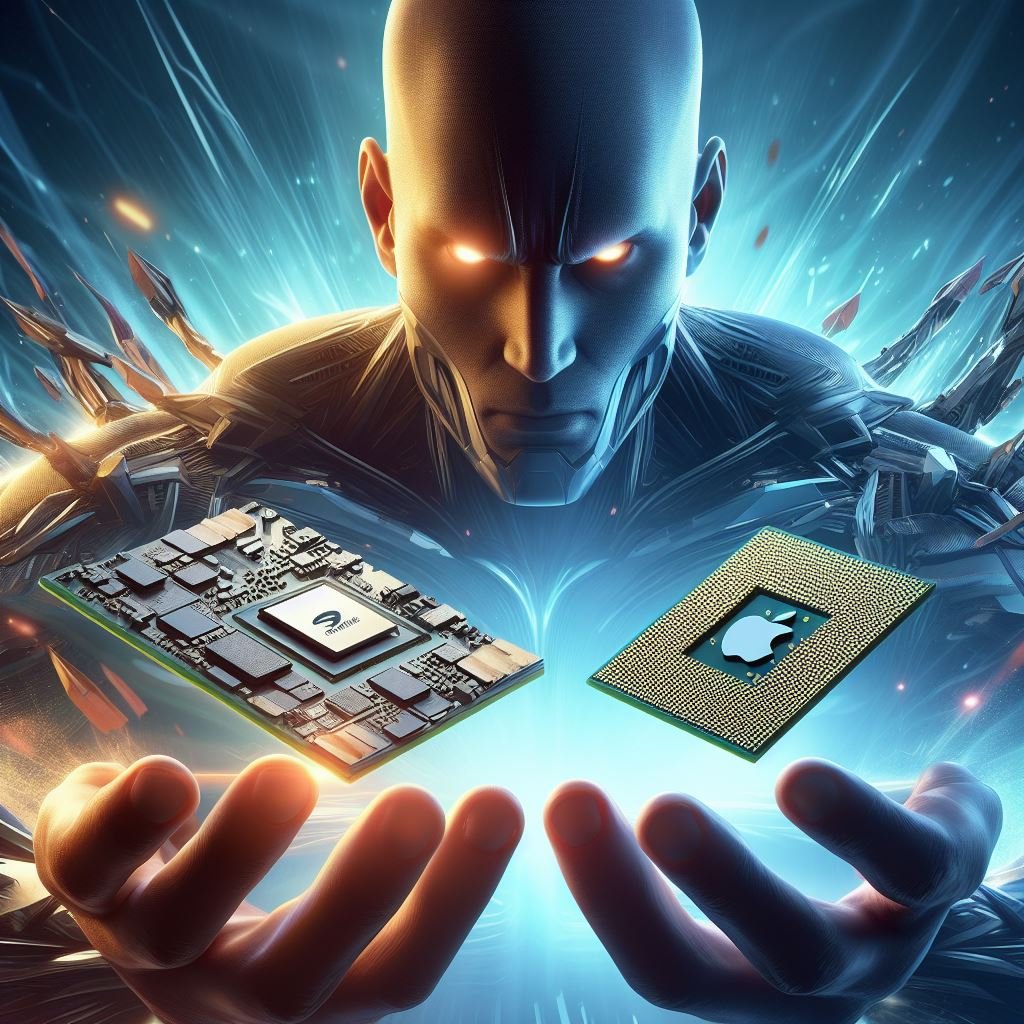Qualcomm’s Snapdragon X Elite and Apple M3http://creativetechbox.com/?p=4630&preview=true&_thumbnail_id=4631 mobile processors are titans in the mobile processing space, and they are currently engaged in a heavyweight match to see which one will reign supreme. Both customers and fans of technology anxiously anticipate the outcome of this historic competition

Qualcomm’s Snapdragon X Elite, powered by Oryon cores and developed by Nuvia, will challenge Apple in the laptop market. It poses a massive threat to Apple’s hegemonic position and paves the way for a conflict amongst chip manufacturers that promises to rewrite the rules for the entire industry.
On the other hand, Apple has presented the M3, demonstrating its most recent developments in chipset technology. With 3nm fabrication and 37 billion transistors on a chip, the M3 is designed for breakthrough performance and efficiency. Apple’s commitment to market leadership is clear.
A Quick Look at the Specifics
Apple M3:
Let’s take a more in-depth look at the features that set these options apart from the competition:
The Qualcomm Snapdragon X Elite:

The 4nm TSMC fabrication process
Transistors: Undisclosed Central Processing Unit Cores: a total of twelve high-performance cores
Up to 4.3 GHz at 80 watts is the maximum frequency.
GPU: New Adreno GPU TDP: 23W and 80W profiles
Hexagon NPU (45 TOPS)
RAM: Up to 64GB
Memory Transfer Rate: 136 GB per second
LPDDR5X is the type of RAM, and connectivity options include Wi-Fi 7 and Bluetooth 5.4 LE
Snapdragon X65 5G modem is available as an optional modem.
Other Characteristics: AV1 encode/decode Apple M3 Pro:
Apple M3:

Fabrication Process Utilizing TSMC’s 3nm Technology
37 billion central processing unit transistors CPUs: 12 high-performance, six efficiency
The highest frequency possible is 4,05 GHz.
GPU: The next-generation GPU developed by Apple (14 or 18 cores).
TDP: Unknown at this time
Up to 16 cores (18 TOPS) are available in the Neural Engine.
RAM Unified: Up to 36GB
Memory Transfer Rate: 150 GB per second
LPDDR5 is the kind of RAM.
Wi-Fi 6E and Bluetooth 5.3 are the connectivity and modem options, respectively. Details that have not been disclosed
Other Characteristics: AV1 deciphering
Both chipsets have powerful cores, high clock rates, and fantastic memory configurations, making competition fierce. However, the most crucial issue that needs to be answered is: which will be the best performer?
Titans vs. CPUs

Snapdragon X Elite’s 4nm manufacturing and 12 high-performance Oryon cores power its CPU. The potent mix that we have put together creates the groundwork for an outstanding performance. Qualcomm has thoughtfully provided two thermal profiles for various situations. The 23W profile is designed for thin laptops, while the 80W version is for powerful computers. X Elite can adapt to diverse needs with clock speeds up to 4.3GHz in the 80W version.
Apple M3 comes With 3nm and 37 billion transistors, Apple’s M3 Pro competes. Its 12 CPU cores are ingeniously divided into six high-performance and six efficient. The exact power profile of the M3 Pro has yet to be released, but early Geekbench results point to a top clock speed of 4.05GHz. The competition between single-core and multi-core processors is heating up, and everyone is looking forward with bated breath to seeing the results.
Geekbench: Snapdragon X Elite vs. Apple M3

Qualcomm has unveiled the Snapdragon X Elite, which has recently received Geekbench 6 results for the 23W and 80W variants. The X Elite (23W) performed admirably in the single-core test, scoring 2,741, and it performed exceptionally well in the multi-core test, scoring 13,021. This shows the X Elite’s potential to reach 4.0GHz under single-core workloads, offering strong performance.
The X Elite (80W) is here to show you.
Finally,

Qualcomm and Apple are helping ARM-based chips grow, signaling an exciting time for the industry. The competition between Snapdragon X Elite and Apple M3 will alter mobile processors, benefiting consumers who will get more powerful and efficient smartphones. What do you think of this epic battle? Comment your thoughts below.”

